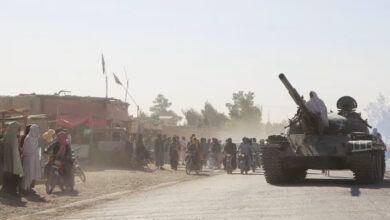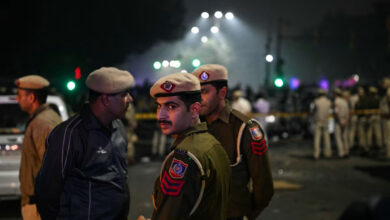Karachi, Pakistan–The day began with a handful of explosions–four to be exact. Three bomb blasts targeted the US Consulate in Peshawar killing five Pakistanis hours before a suicide attack struck a political rally in the country’s north. In Karachi, meanwhile, the financial hub and fashion center of Pakistan, people were preparing for a blast of another kind–one that promised to showcase up-and-coming Pakistani fashion designers.
“The show must go on,” said designer Alizeh Pasha, who came to attend Fashion Week, the second runway show to take place in Karachi since last year, held at the Karachi Marriott from 5 to 9 April. “We’re designers, and we have to keep working to show a lighter side of Pakistan. We have to fight this fight as well.”
Fifty-two designers–including Deepak Perwani, Sana Safinaz, Nauman Arfeen and Obaid Shaikh–presented their collections at the show, which also included international designers from Sri Lanka, Italy and Malaysia. The general theme of the season was longer shirts and dresses with seamless flow and simple silhouettes.
But there was nothing simple about the crowd that gathered to watch the event. Karachi was craving a good show after weeks of depressing news, and they got one. The runway was electrifying, with bold lights and loud music, as Karachi’s elite took their seats. As the models began sashaying down the runway in the latest styles, the crowd was mesmerized.
“[This season] a lot of our stuff is long and flowy and fits in well with the Arab world,” explained Nida Azwer, a popular designer in Karachi who showcased her collection, which was inspired by the ancient Mehrgarh civilization, one of Pakistan’s–and the world’s–oldest. Azwer’s collection was simple and elegant, standing out for its unique screen-printing style. But even though this particular collection was inspired by an ancient South Asian civilization, she does not limit herself to that part of the world.
“Next time, it might be Turkish or Egyptian scripture and writing, but I work with motifs specific to a region,” she said. “I have a lot of clients from Abu Dhabi and it’s a very versatile look…I don’t know if it’s the same in Egypt, but it works for the rest.”
Over the course of the event, fashionistas flocked to the show to discover this summer’s "in" look. While many complained that this year’s Fashion Week lacked the "wow factor" of last year’s, it was still worth their time.
Designer Maheen Khan, hailed by the Italian press as the “Coco Chanel of the East,” sent down a collection that was simple and simply Maheen. Inspired by the famous Agatha Christie mystery novel Murder on the Orient Express, which is set in the 1930s, her collection displayed elegance and her designs were soft and strong at the same time, reminiscent of old-school Egyptian pants, shorter versions of classic belly dancing pants. And when the music went from American classics to thumping Egyptian song, the energy became palpable as the models hit the runway.
The Middle Eastern influences seen in this season’s Pakistani collections were not motivated by religion, and many designers reiterated this point, including Azwer and Pasha. Veteran Pakistani designer and a member of the Fashion Pakistan board Bunto Kazmi categorically stated that there was no Middle Eastern influence on the crème of Pakistani fashion. “When you talk about fashion, it’s a certain strata of society," Kazmi said, "and Pakistani culture is not influenced by Middle Eastern culture at all.”
Some designers might disagree with Kazmi, who admits that there are a “handful” of designers that are leaning more towards an Islamic fusion with fashion. Rabia Z, a designer based in Dubai, called her collection "The Veil Issue," stating that it was created for people who “seek comfort and culture synonymous with fun that’s fashionable and yet in keeping with their faith.” Her models were cloaked from head to toe in long dresses and flowing capes covering their heads and attached to their wrists, which is her signature style.
“Its not just her,” said Pasha. “Another designer, Zaheer Abbas, was influenced by Islam, and he showcased capes representing the dome and used materials like brass and belts to go along with his designs.”
Karachi’s Fashion Week provided the audience with a glimpse the new designs hitting the streets of Pakistan. And while no new designers managed to achieve the stature of the older, more experienced artists, the event promised hope of a new flavor. The Middle Eastern touch, meanwhile, looks set to continue, even if it simply means having a model hold a shisha pipe as she struts down the catwalk–like designer Obaid Shaikh did–or dressing up male models in Morrocan hats, as was the case in Nauman Arfeen’s collection.
“There are quite a few designers right now who have the potential to make it internationally," said Pasha. "But they’re going to have to pull off something extraordinary to get there.”




